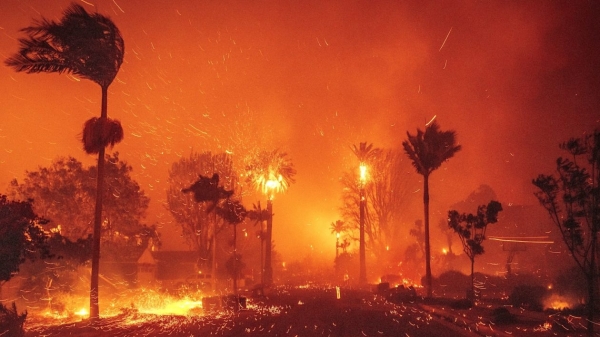Daniel Swain studies extreme events. A climate scientist with joint appointments at UCLA and the National Center for Atmospheric Research, Swain also writes the blog Weather West, which focuses on California, and hosts semi-regular “public office hours” on YouTube. For his ability to explain science to a lay audience, Swain has been called “the Carl Sagan of weather.”
On January 4, three days before the Palisades Fire broke out in Los Angeles, Swain posted a warning on Weather West. A “prolonged, and possibly extreme offshore wind and fire weather event to unfold this week across SoCal,” he wrote. That same week the journal Nature Reviews Earth & Environment published an article he coauthored titled “Hydroclimate volatility on a warming Earth,” which showed that warming is driving increasingly dramatic swings between wet and dry periods all around the world. The Los Angeles fires, at least in part, are a product of this sort of “hydroclimate whiplash.” In 2023 and 2024, the city experienced unusually wet winters, which spurred the growth of grasses and shrubs. Then the rain stopped. Since July, the city has received a mere three-hundredths of an inch of precipitation. The result has been acre after acre of desiccated brush — the perfect kindling for wildfires.
Read more at: Yale Environment 360
The Palisades Fire in Los Angeles, January 7. (Photo Credit: Ethan Swope / AP Photo)
Health Top Stories Sci/Tech Climate

